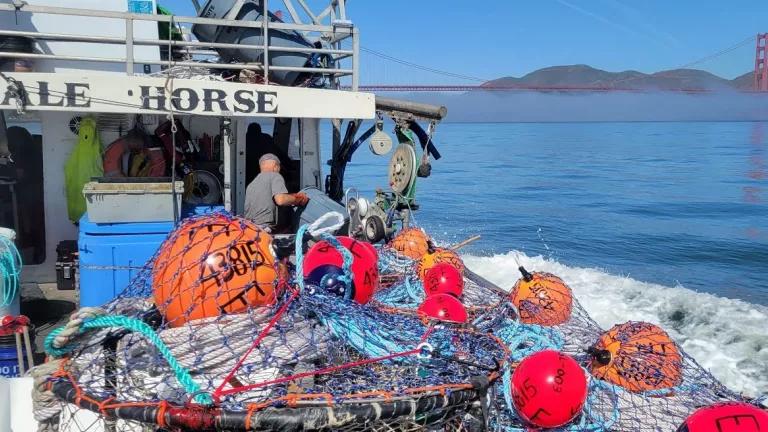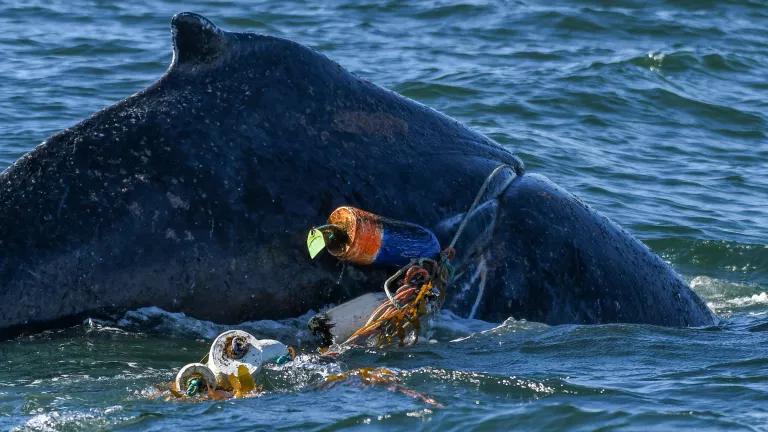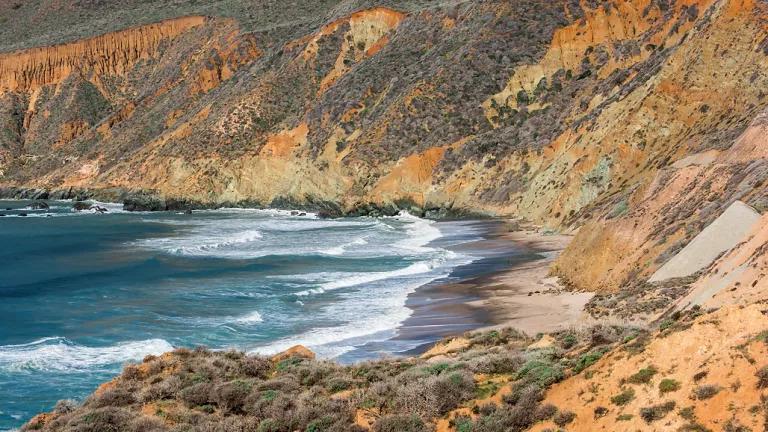The Next Wave of Ocean Conservation
California has the power to lead, but must raise its ambition.

A mother sea otter with two pups in a California kelp forest.
As advocates, decision-makers or leaders, we focus on affecting positive change for the future. An important component of future progress, however, is reflecting on what we’ve done and using those lessons to set the path forward.
The world’s fifteenth Convention on Biodiversity Conference of the Parties (COP 15) convenes in Montreal, Canada this week to negotiate a global biodiversity framework that could help arrest the biodiversity crisis. Countries will negotiate language for Target 3, which will set global standards for ecosystem conservation. (As a reminder, scientists agree that we must aim to protect 30 percent of representative ocean and terrestrial habitats to protect human life on earth.) California is the first and only subnational government with observer status—meaning they can participate, but are not a voting member—giving state leaders an unprecedented opportunity to demonstrate bold and ambitious leadership as it implements its own 30x30 goals.
In coastal waters, California created the first-of-its-kind network of Marine Protected Areas (MPAs), earning the state global recognition. This effort resulted in protections for 16 percent of state waters at varying levels. A decade later, California’s MPAs show signs of recovery and resilience, yet the pressures on marine resources and threats to our environment have endured and grown. Meaningfully reaching the 30 percent target with new, fully and highly protected areas, is essential to conserving the integrity of coastal marine ecosystems for all, and to prepare our beloved ocean for the threats it will face. Establishing new MPAs in a way that recognizes and enhances opportunities for marginalized communities to connect with and benefit from the ocean is an essential component of 30x30.
For its own 30x30 initiative, California has committed to enhancing equity, outdoor access and returning land and authority to Native Tribes. And, in the state’s Pathways to 30x30 Strategy, the state acknowledges the importance of highly and fully protected MPAs in achieving biodiversity outcomes. However, to date, California has been reluctant to commit to the creation of new Marine Protected Areas under 30x30 before the completion of the first decadal review of California’s MPA network. In the interim, the Pathways Strategy favors potentially layering conservation measures across regions that would still allow for harmful extractive activities. (For example, California’s Pathways to 30x30 Strategy includes potential options like a single-use plastic ban in National Marine Sanctuaries within state waters, or areas minimally protected from certain fishing gear through fisheries management measures). While these initiatives are important, the science says that we must set aside more areas of the ocean that are free from the stressors of resource extraction and development. Doing so will also benefit the multitude that value the ocean for the non-extractive experiences it provides. This message is one that the California state delegation must help underscore at COP 15.
California has long championed the fact that protecting the environment need not come at the expense of the economy. As countries negotiate Target 3, California could highlight the fact that enhancing ocean wildlife experiences and equitable access to recreation opportunities through ambitious 30x30 implementation is an opportunity to protect nature and improve quality of life for all.
California legislators and Natural Resource Agency officials have already set the stage to take on this leadership role.
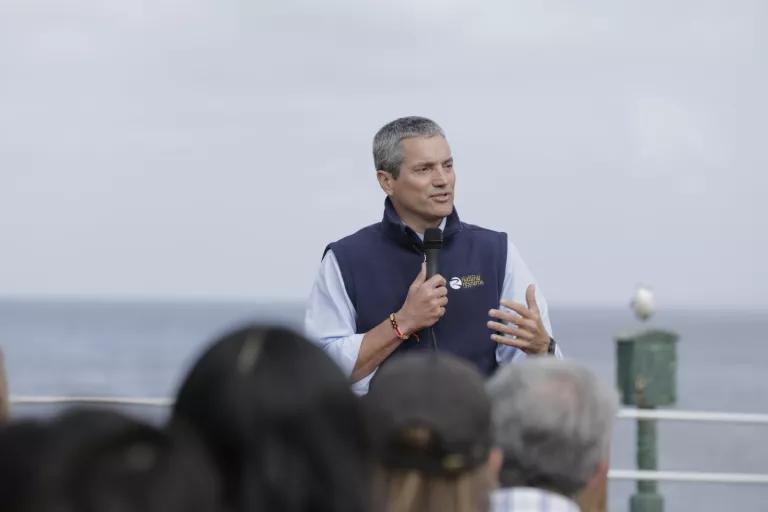
California Secretary for Natural Resources Wade Crowfoot speaks in front of the Matlahuayl State Marine Reserve in La Jolla, California.
Last month, NRDC with our partners at Azul and Environment California, hosted an event to celebrate California’s State Marine Reserves—the state’s MPAs that are fully protected.
With a backdrop of La Jolla’s Matlahuayl State Marine Reserve, an iconic and abundant fully protected MPA, state leaders, advocates and student activists gathered to highlight State Marine Reserves as a solution and to discuss how we can build on this foundation in the decade ahead.
At the event, speakers highlighted key elements of California’s current and future MPA efforts:
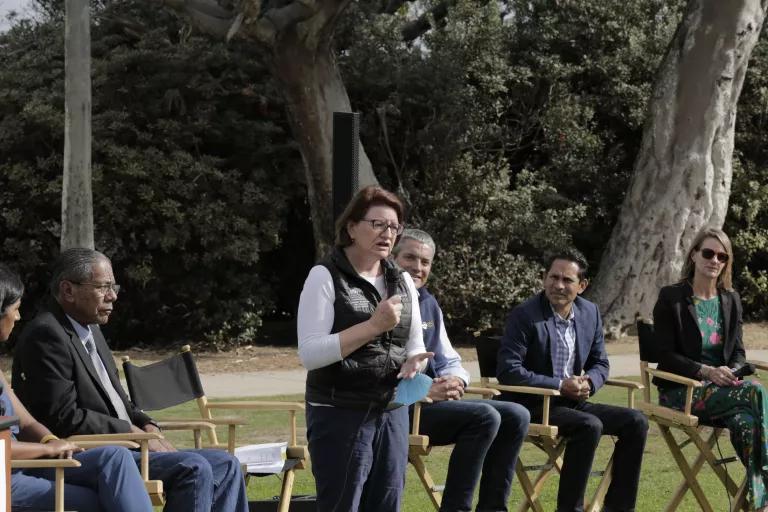
California Senate Pro Tem Toni Atkins addresses the crowd with Dr. Rodriguez, Secretary Crowfoot, Dr. Aburto-Oropeza and President Murray.
- Senate Pro Tem Toni Atkins, a coastal champion representing La Jolla, emphasized the value of fully and highly protected areas for California and to achieve the goals of 30x30.
- Dr. Stanley Rodriguez, a Tribal Councilman for the Iipay Nation, Director of Kumeyaay Community College and appointee to the California Native American Heritage Commission, acknowledged the history and significance of the ancestral lands and waters of the Kumeyaay people, and highlighted the need to care for our planet which takes care of us.
- California Secretary for Natural Resources Wade Crowfoot recognized the importance of California to global biodiversity as a known biodiversity hotspot and doubled down on the commitment to respond to the urgency of the biodiversity crisis through the state’s 30x30 efforts.
- Dr. Octavio Aburto Oropeza from Scripps Institution of Oceanography and expert in marine protected area science and management, affirmed that fully protected areas are recovering biodiversity and supporting communities, and called for better international collaboration since ocean ecosystems span borders.
- California Fish and Game Commission President Samantha Murray emphasized the importance of social justice and tribal involvement in decision making and applauded the power of local efforts, like the Matlahuayl State Marine Reserve, as leaders take to the international stage at COP 27 and COP 15.
Visiting the places we protect, reflecting on what’s working and how we can improve is how we can collectively work to meet the challenges ahead and set an example for the path forward. Our hope is that our state leaders continue to carry these lessons and set a high bar for protecting our world ocean at COP 15.


